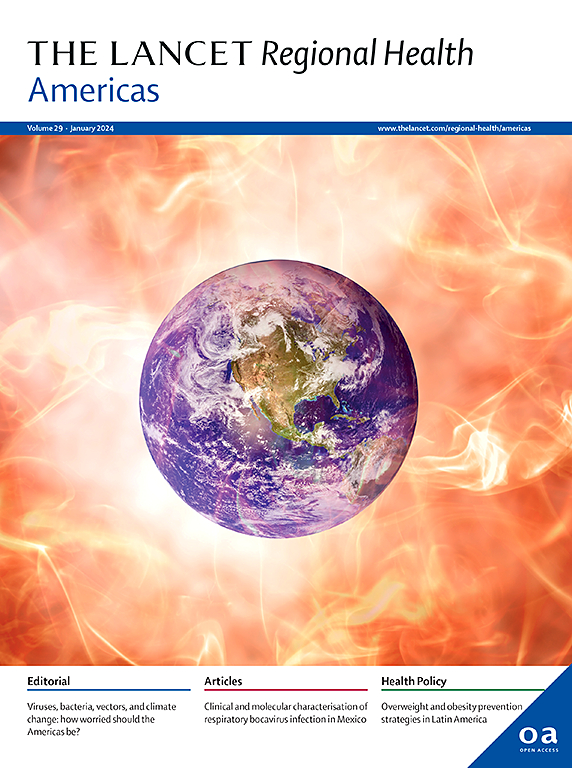Perinatal health outcomes of offspring of internal migrant women according to human development index: a registry-based cohort study of over 10 million live births from Brazil
IF 7
Q1 HEALTH CARE SCIENCES & SERVICES
引用次数: 0
Abstract
Background
Migration, driven by factors like poverty, violence, and natural disasters, is a key social determinant of health. While international migrants often have worse perinatal outcomes, research on perinatal health differences between internal migrants and non-migrants remains limited. We aimed to determine whether the offspring of women who migrate within Brazil experience poorer perinatal outcomes than those of non-migrants, according to the Human Development Index (HDI) of their municipalities of origin and destination.
Methods
We used the CIDACS Birth Cohort, consisting of women applying for social programmes in the Unified Registry for Social Programmes Cadastro Único linked with live births and mortality registries. We included live births conceived from March 2010 to February 2018. Internal migrants were women who changed their state of residence from registration in CadUnico to the birth of the child. We derived risk ratios (RR) of migration's effect according to HDI of residence before and after migration using logistic regression.
Findings
We included 10,184,021 births in the study, with 5.7% of these births from women who were internal migrants. The offspring of women who migrated to municipalities with equal/higher HDI (80% of migrations), exhibited a decreased risk of preterm births (RR: 0.94, 95% CI: 0.93–0.95), low birth weight (RR: 0.94, 95% CI: 0.92–0.95) and small for gestational age (RR: 0.92, 95% CI: 0.91–0.93), but higher risk of congenital abnormalities (RR: 1.14, 95% CI: 1.10–1.18). The offspring of women who migrated to municipalities with lower HDI had delayed access to healthcare and worse outcomes except for a lower risk of low birth weight (RR: 0.94, 95% CI: 0.92–0.96).
Interpretation
Offspring of those migrating to municipalities with equal/higher HDI tend to have better perinatal outcomes, whereas migrants to lower HDIs have a similar pattern to non-migrant women.
Funding
NIHR, Wellcome Trust, Royal Society.
根据人类发展指数的国内移徙妇女后代的围产期健康结果:对巴西1 000多万活产婴儿进行的基于登记的队列研究
由贫困、暴力和自然灾害等因素驱动的移徙是健康的一个关键社会决定因素。虽然国际移徙者的围产期结果往往较差,但关于国内移徙者和非移徙者之间围产期健康差异的研究仍然有限。我们的目的是根据原籍城市和目的地城市的人类发展指数(HDI),确定在巴西境内移民妇女的后代是否比非移民妇女的后代的围产期结局更差。方法:我们使用CIDACS出生队列,包括在与活产和死亡登记相关联的社会计划统一登记地Único中申请社会计划的妇女。我们纳入了2010年3月至2018年2月期间出生的活产婴儿。境内移徙者是将其居住地从在卡迪尼科登记改为孩子出生的妇女。采用logistic回归方法,根据移民前后居住HDI,推导出移民影响的风险比(RR)。研究结果我们在研究中纳入了10,184,021例新生儿,其中5.7%的新生儿来自国内移民妇女。迁移到人类发展指数相同或更高的城市(80%的迁移)的妇女的后代早产(RR: 0.94, 95% CI: 0.93-0.95)、出生体重低(RR: 0.94, 95% CI: 0.92 - 0.95)和胎龄小(RR: 0.92, 95% CI: 0.91-0.93)的风险降低,但先天性异常的风险较高(RR: 1.14, 95% CI: 1.10-1.18)。移居到人类发展指数较低的城市的妇女的后代获得医疗保健的机会延迟,除了出生体重低的风险较低外,结果较差(RR: 0.94, 95% CI: 0.92-0.96)。移居到人类发展指数相同或更高的城市的妇女的后代往往有更好的围产期结局,而移居到人类发展指数较低的城市的妇女与非移民妇女的情况相似。资助国家卫生研究院,惠康信托基金,皇家学会。
本文章由计算机程序翻译,如有差异,请以英文原文为准。
求助全文
约1分钟内获得全文
求助全文
来源期刊

Lancet Regional Health-Americas
Multiple-
CiteScore
8.00
自引率
0.00%
发文量
0
期刊介绍:
The Lancet Regional Health – Americas, an open-access journal, contributes to The Lancet's global initiative by focusing on health-care quality and access in the Americas. It aims to advance clinical practice and health policy in the region, promoting better health outcomes. The journal publishes high-quality original research advocating change or shedding light on clinical practice and health policy. It welcomes submissions on various regional health topics, including infectious diseases, non-communicable diseases, child and adolescent health, maternal and reproductive health, emergency care, health policy, and health equity.
 求助内容:
求助内容: 应助结果提醒方式:
应助结果提醒方式:


